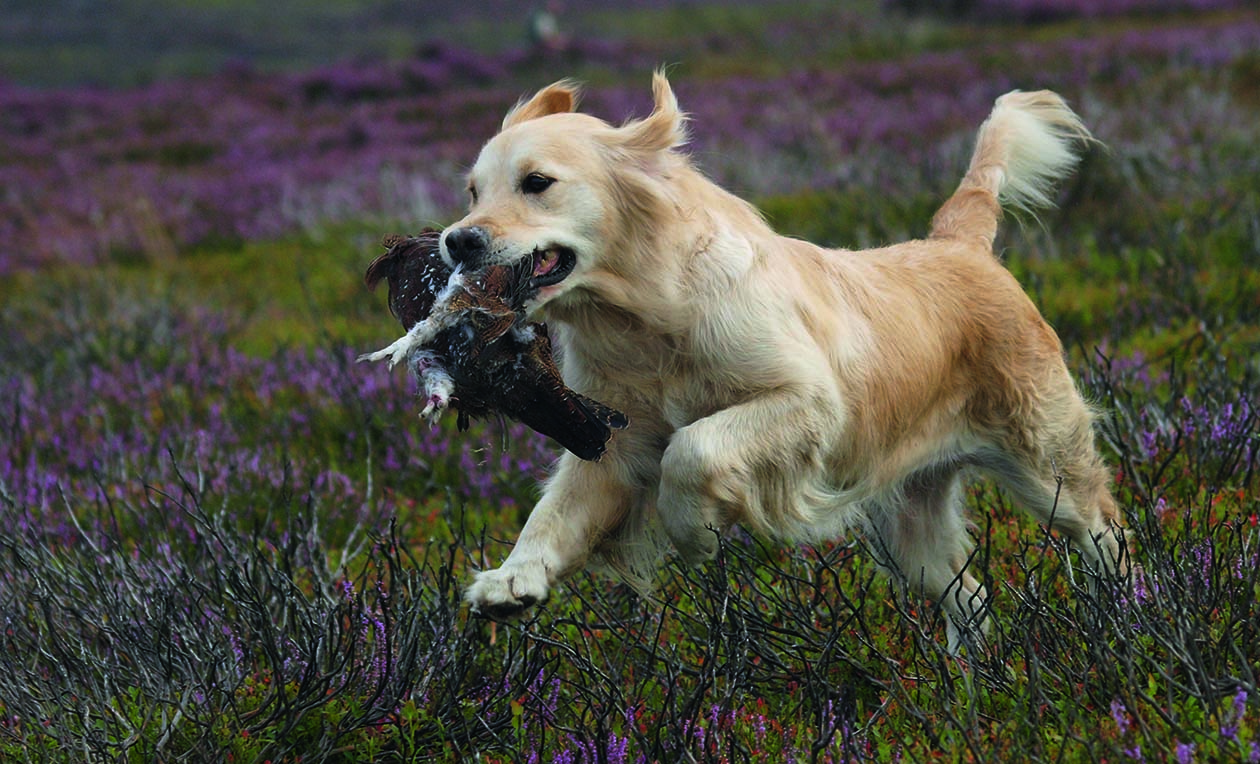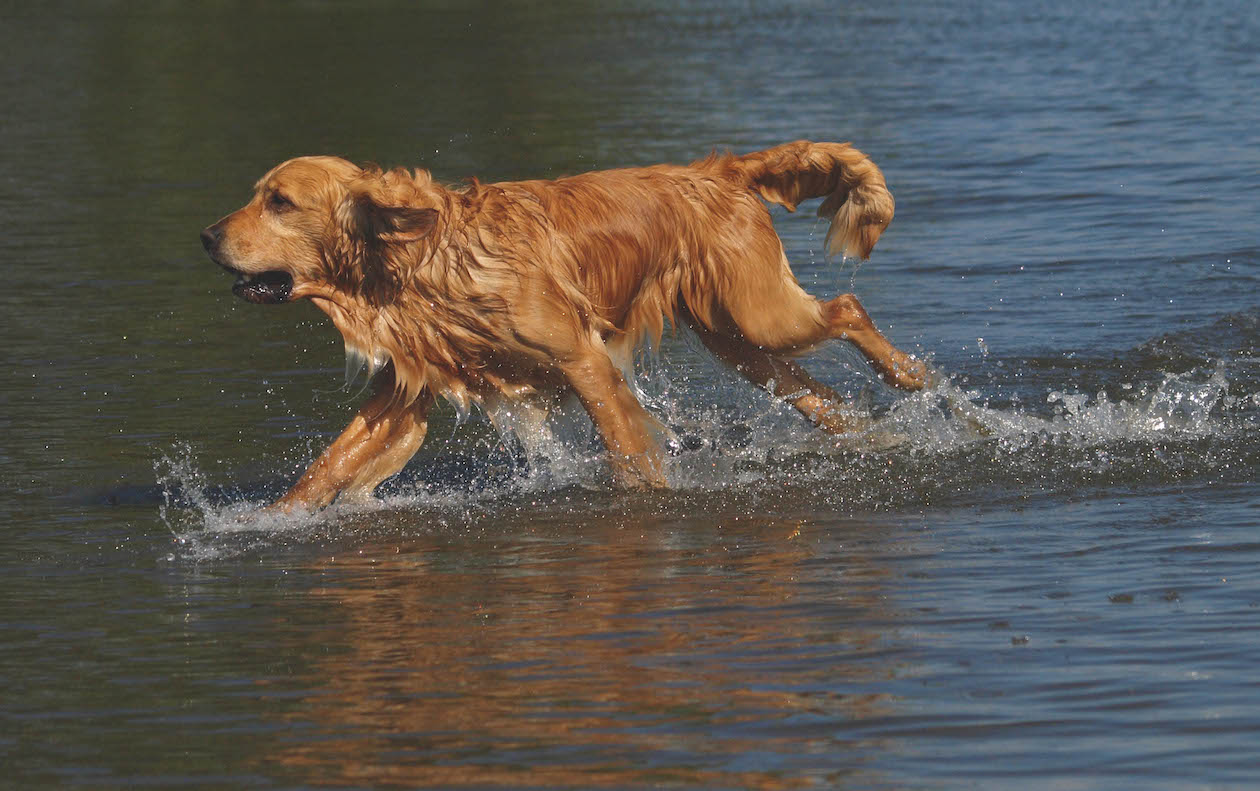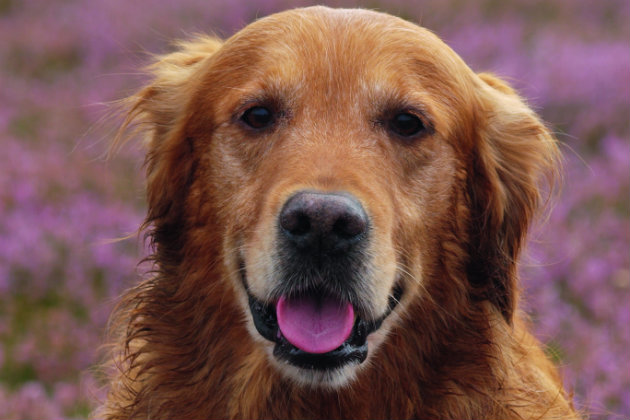Win CENS ProFlex DX5 earplugs worth £1,149 – enter here
The golden retriever: why it is a golden all-rounder
 A show golden retrieving a grouse
A show golden retrieving a grouse
Exactly a century ago, a golden retriever called Balcombe Boy became the first dual champion in his breed, an impressive achievement then and an unlikely one now. Bred by Viscount Harcourt and handled and trained by his owner, Captain Dick Herman, Balcombe Boy became a show champion and a field trial champion in the same year, 1922.
Further dual champions followed as, until the middle of the last century, it wasn’t unusual for the same dogs to compete both in trials and in shows. However, as far as I have been able to discover, the last dual champion in the breed was Lucy Ross’s international champion, David of Westley. He achieved his title nearly 70 years ago and, though there have been a few show champion goldens since that have managed to win field trial awards, none has achieved the elusive title of field trial champion.
It’s not hard to explain why. The demands of the show ring are quite different than the shooting field. Show-bred golden retrievers tend to be thicker-coated, heavier-set animals, lacking the athletic ability of their finer-built, longer-legged working cousins. (Read why aren’t golden retrievers more popular in the field?)
The colour of the coat is a good indication of a dog’s breeding, with the working dogs typically a wonderful shade of burnished gold, the show dogs more often a creamy yellow, sometimes almost white. I’ve always been mystified by the popularity of such pale dogs, as it’s difficult to find a more beautiful colour than the traditional gold.
However, regardless of the colour of the coat, I’ve often been impressed by both the enthusiasm and ability of show-bred dogs in the shooting field. My guess is that a higher proportion of show/pet-bred golden retrievers go shooting than is the case for any of our other native gundog breeds. (Read what happens when you cross a labrador with a golden retriever?)
Occasionally, I meet show-bred labradors in the field, much more rarely cockers or springers, but it’s not unusual to see pale-coated show goldens performing admirably as picking-up dogs.
Some 65 years ago, Mrs M K Wentworth-Smith wrote an article discussing dual-purpose goldens in the Golden Retriever Club of Scotland Handbook. She wrote that all owners of these retrievers should remember that the golden “is a working dog and should be given the chance to use his inherited instincts for seeking and retrieving, no matter in how simple a form. Give him the chance to develop and use his latent working qualities to hand on to the future generations.” I’m sure that she would be delighted to find that today there are a significant number of golden enthusiasts who do exactly that.

Golden retrievers are easy going
Easy-going golden retriever
Eleven years ago, I spent a memorable day picking-up grouse on the North York Moors with Angie Cooper, who started by showing her goldens before discovering how well they could work, too. She told me that she believes that all golden retrievers, regardless of their breeding, have the potential to work, as her dogs demonstrated. Perhaps her show-bred dogs weren’t as fast, or as stylish, as their working-bred companions, but they made a great job of picking-up the grouse. (Can a show bred dog really be a good working dog?)
I am sure that the reason show- bred golden retrievers can perform so well in the shooting field is because they are one of the most biddable and trainable of breeds, with an easy-going temperament and a desire to please.
It’s notable that this is a breed that excels in a number of disciplines, ranging from search-and-rescue to guide dogs and assistance dogs. Retrieving is what they were originally bred for, as their name reminds us, and most retain instinctively their ability to do precisely that. (Read more on golden retriever training.)
It is, perhaps, surprising that more effort hasn’t been made to cross show with working-type dogs to produce animals that will not only please the judge’s eye in the show ring, but also perform in the field.
According to Wendy Andrews, another enthusiastic worker of show-bred dogs, “this has been tried many times and has sadly always resulted in mediocrity, with offspring not good enough to make it to the top in either sphere”. That doesn’t surprise me, but I’m sure such outbreeding would be good for the individual dog’s health.
I’ve long been a fan of golden retrievers and have often wondered why they are not more popular as shooting dogs, as they really can do everything a labrador can do. I’m sure one of the reasons that we don’t see more of them is because working-bred puppies are not nearly as easy to find compared with labradors. However, few breeds have a more dedicated following. It’s rare to find anyone who has owned and worked a golden retriever, but changed to labradors.

Golden retrievers make good family pets too.
Good family pet
If you are looking for a good family pet that you can also take shooting, then the golden has to be one of the first dogs to consider, while as we have seen, even a show-bred dog can perform in the shooting field if given the opportunity.
However, there is one downside to golden retrievers compared with labradors. The wonderful golden coat is a magnet for dirt and needs regular brushing, while dogs kept indoors never stop shedding hair. If you own a golden retriever, a good vacuum cleaner is essential.
Related Articles
Get the latest news delivered direct to your door
Subscribe to Shooting Times & Country
Discover the ultimate companion for field sports enthusiasts with Shooting Times & Country Magazine, the UK’s leading weekly publication that has been at the forefront of shooting culture since 1882. Subscribers gain access to expert tips, comprehensive gear reviews, seasonal advice and a vibrant community of like-minded shooters.
Save on shop price when you subscribe with weekly issues featuring in-depth articles on gundog training, exclusive member offers and access to the digital back issue library. A Shooting Times & Country subscription is more than a magazine, don’t just read about the countryside; immerse yourself in its most authoritative and engaging publication.







